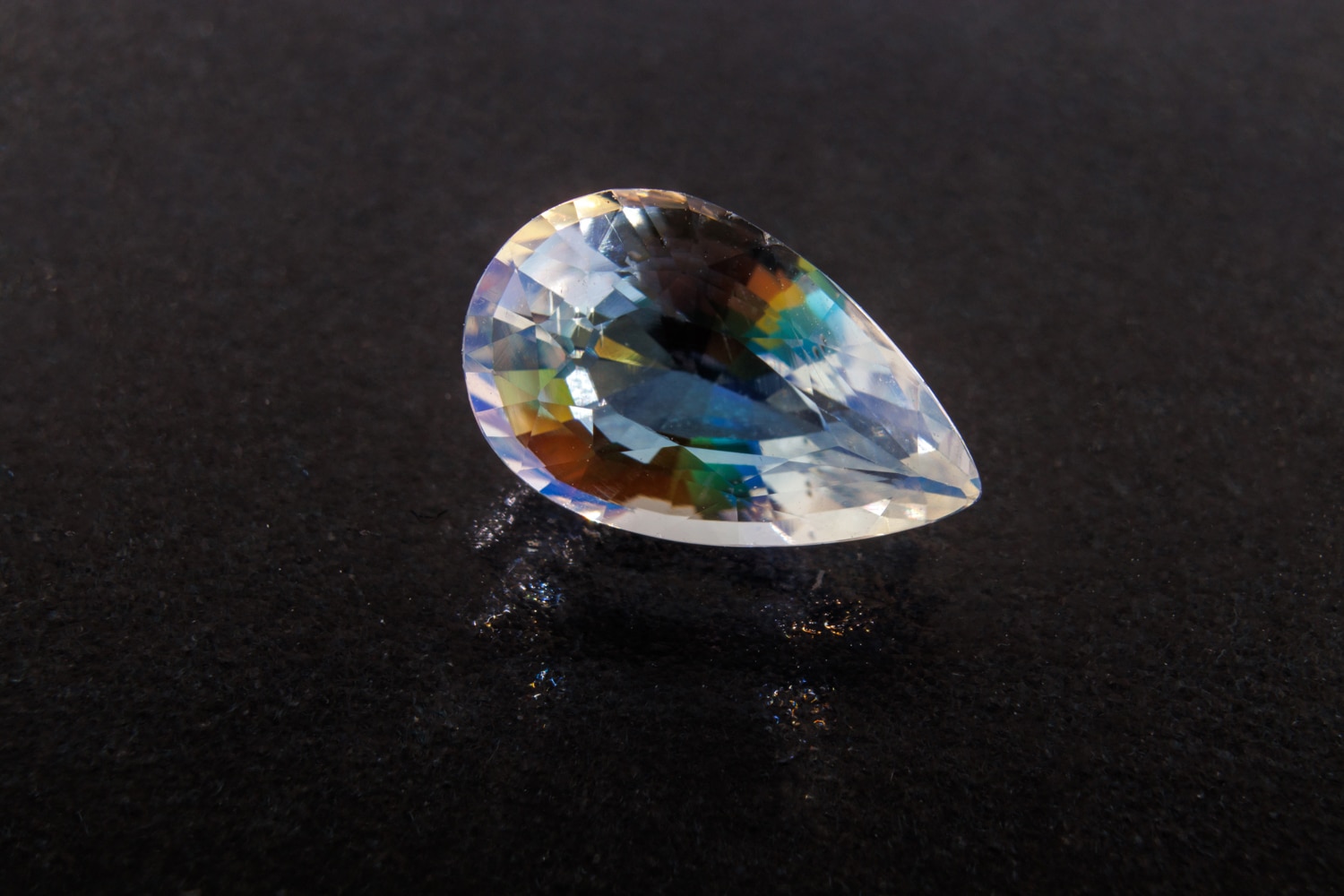Popular categories
- News
- Recommended
- For investors
Popular types of stones
Other categories
Popular categories
Popular types of stones
Other categories

Moonstone is a popular staple in the jewellery industry with high demand, mainly due to its bluish, rocking effect called adularescence. This effect, also known as “schiller”, is best seen on cabochon cut stones, but various facet cuts are also popular in the case of transparent rough.
Last year (2023), a high-quality transparent raw material was discovered in Madagascar, suitable for facet grinding, in which, in addition to a strong blue adularescence, flashes of orange can also be observed. This raw material comes from the Andilamena locality in the Alaotra-Mangoro region in the north-east of the country.
Moonstone belongs to the group of alkaline feldspars and is a variety of potassium feldspar orthoclase (KAlSi3O8). The sodium feldspar albite (NaAlSi3O8) is also a member of the alkaline feldspars. However, albite has a privileged position because it is also a member of the plagioclase (sodic-calcic) isomorphous albite-anorthite series, in which there is unlimited isomorphous miscibility between its members.
However, the situation among alkaline feldspars from orthoclase to albite is different – unrestricted miscibility occurs only at higher temperatures. When the temperature drops, the process of exsolution (demixing) then occurs, where the homogeneous solid solution “breaks up” into two separate crystalline phases. If the orthoclase was more abundant in the solid solution and the albite in it forms a demixed structure, then this demixed structure is called “perthite”. The albite precipitates form microscopic lamellae (platelets) in the host orthoclase, which vary in thickness and regularity of arrangement.
The moonstone thus consists of two different types of feldspars, and it is thanks to the lamellae of mixed white albite that the optical effect of adularescence is created. When light falls on these lamellae, it is scattered. Because the intensity of the scattering is more pronounced for shorter wavelengths, we see more of the blue colour and can observe the unusual bluish glow that gives the stone its name.
A rainbow moonstone can exhibit other colors of the spectrum, not just blue, compared to a regular moonstone. Furthermore, it is not a variety of orthoclase, but falls into the plagioclase series, specifically the member labradorite. The name moonstone is therefore misleading, although generally respected because of its similarity to the traditional moonstone. The labradorite affiliation has also been confirmed for a new rough from Madagascar.
Labradorite is made up of albite and anorthite feldspars, and again the lamellae of these two feldspars alternate. The content of the anorthite component is reported to be between 50 and 70 %. However, when light interacts with labradorite, light diffracts on the lamellae, not scattering as in the case of a classic moonstone. The resulting colours depend on the thickness of the alternating layers and their refractive indices. This phenomenon is called labradorescence.
The raw material from Madagascar was reportedly mined in 2023 and the first few kilograms were sold at an extremely high price per carat. Hopefully we will see this interesting material on the market in larger quantities soon.

